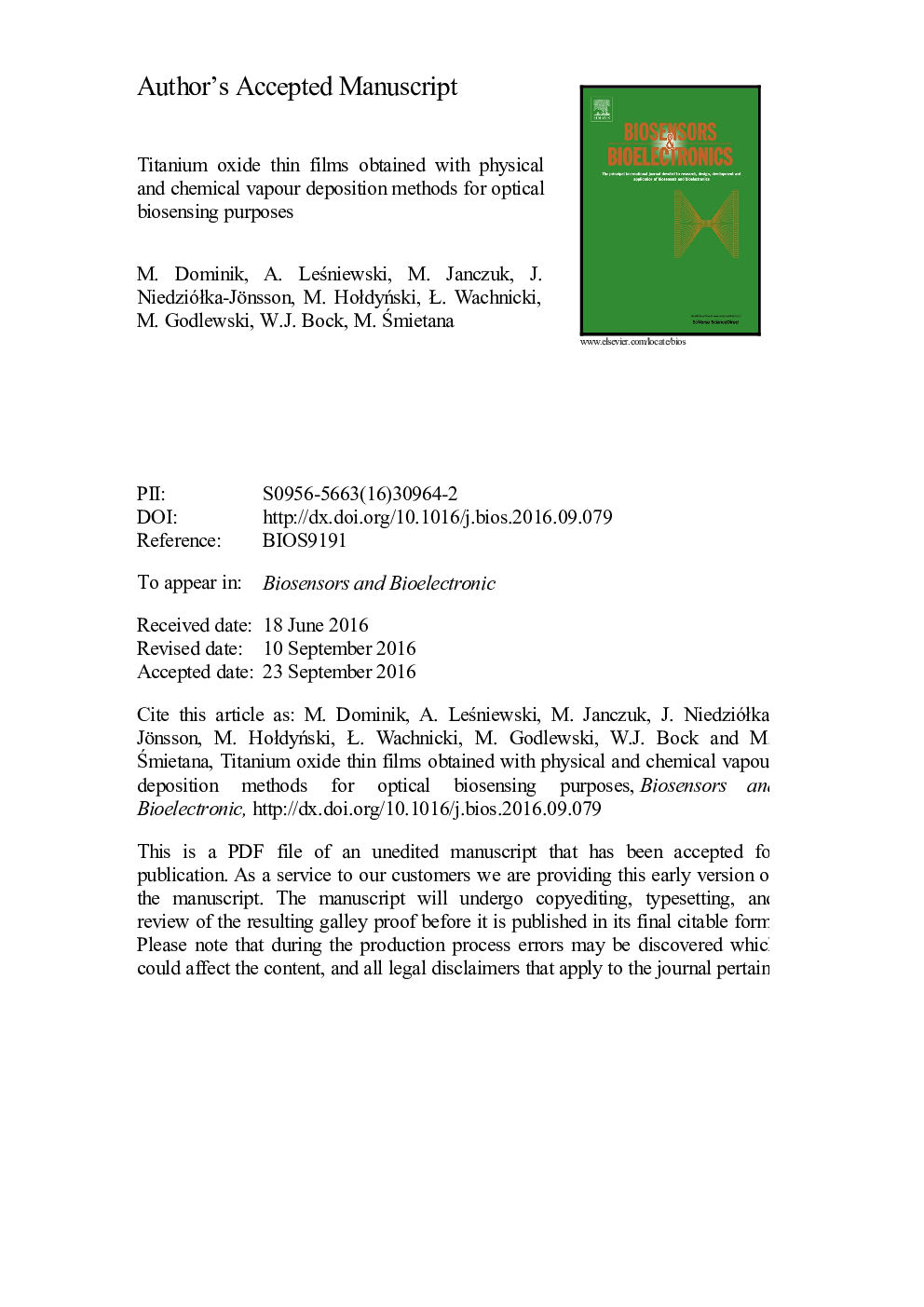| کد مقاله | کد نشریه | سال انتشار | مقاله انگلیسی | نسخه تمام متن |
|---|---|---|---|---|
| 5031529 | 1470939 | 2017 | 20 صفحه PDF | دانلود رایگان |
عنوان انگلیسی مقاله ISI
Titanium oxide thin films obtained with physical and chemical vapour deposition methods for optical biosensing purposes
ترجمه فارسی عنوان
فیلم های نازک اکسید تیتانیوم به دست آمده با روش های رسوب گذاری فیزیکی و شیمیایی برای اهداف بیوسنس اپتیک
دانلود مقاله + سفارش ترجمه
دانلود مقاله ISI انگلیسی
رایگان برای ایرانیان
کلمات کلیدی
اکسید تیتانیوم، اسپکترومغناطیسی مگنترون واکنش پذیر، رسوب لایه اتمی، سنجش رایگان خواص نوری، مشبک بلند مدت، رزونانس پلاسمون سطح محلی، بی اختیاری سازی،
Reactive magnetron sputtering - اسپکترومغناطیسی واکنش پذیرTitanium oxide - اکسید تیتانیوم Biofunctionalization - بی اختیاریoptical properties - خواص نوریLocalised surface plasmon resonance - رزونانس پلاسمون سطح محلیAtomic layer deposition - رسوب لایه اتمیLabel-free sensing - سنجش رایگانLong-period grating - مشبک بلند مدت
موضوعات مرتبط
مهندسی و علوم پایه
شیمی
شیمی آنالیزی یا شیمی تجزیه
چکیده انگلیسی
This work discusses an application of titanium oxide (TiOx) thin films deposited using physical (reactive magnetron sputtering, RMS) and chemical (atomic layer deposition, ALD) vapour deposition methods as a functional coating for label-free optical biosensors. The films were applied as a coating for two types of sensors based on the localised surface plasmon resonance (LSPR) of gold nanoparticles deposited on a glass plate and on a long-period grating (LPG) induced in an optical fibre. Optical and structural properties of the TiOx thin films were investigated and discussed. It has been found that deposition method has a significant influence on optical properties and composition of the films, but negligible impact on TiOx surface silanization effectiveness. A higher content of oxygen with lower Ti content in the ALD films leads to the formation of layers with higher refractive index and slightly higher extinction coefficient than for the RMS TiOx. Moreover, application of the TiOx film independently on deposition method enables not only for tuning of the spectral response of the investigated biosensors, but also in case of LSPR for enhancing the ability for biofunctionalization, i.e., TiOx film mechanically protects the nanoparticles and induces change in the biofunctionalization procedure to the one typical for oxides. TiOx coated LSPR and LPG sensors with refractive index sensitivity of close to 30 and 3400Â nm/RIU, respectively, were investigated. The ability for molecular recognition was evaluated with the well-known complex formation between avidin and biotin as a model system. The shift in resonance wavelength reached 3 and 13.2Â nm in case of LSPR and LPG sensors, respectively. Any modification in TiOx properties resulting from the biofunctionalization process can be also clearly detected.
ناشر
Database: Elsevier - ScienceDirect (ساینس دایرکت)
Journal: Biosensors and Bioelectronics - Volume 93, 15 July 2017, Pages 102-109
Journal: Biosensors and Bioelectronics - Volume 93, 15 July 2017, Pages 102-109
نویسندگان
M. Dominik, A. LeÅniewski, M. Janczuk, J. NiedzióÅka-Jönsson, M. HoÅdyÅski, Å. Wachnicki, M. Godlewski, W.J. Bock, M. Åmietana,
